Analytical Shape Choices
For 2 mL glass vials there are 3 shape formats to choose from: Flat Bottomed, Maximum Recovery and Ultimate Recovery. The Flat-bottomed shape design was discussed in the previous section.
Flat Bottomed Vials
As the original workhorse of chromatography, 2 mL flat-bottomed vials laid the foundation for sample containment with their stable, stand-alone design, enabling effortless manual handling on lab benches without the need for racks. Crafted from durable borosilicate glass or polypropylene, they provided reliable chemical compatibility and were optimized for early headspace GC systems, delivering efficient heat transfer through their broad, flat base for consistent analysis of volatile compounds. Their compatibility with a variety of autosamplers and support for multiple closure types (screw, crimp, snap) made them a versatile standard in early HPLC and GC workflows, while their affordability and availability cemented their role in routine lab applications. The introduction of inserts allowed these pioneering vials to adapt to low-volume samples, maintaining their utility even as newer, specialized conical designs like Max Recovery and Total Recovery vials emerged to better address low residual volume needs.
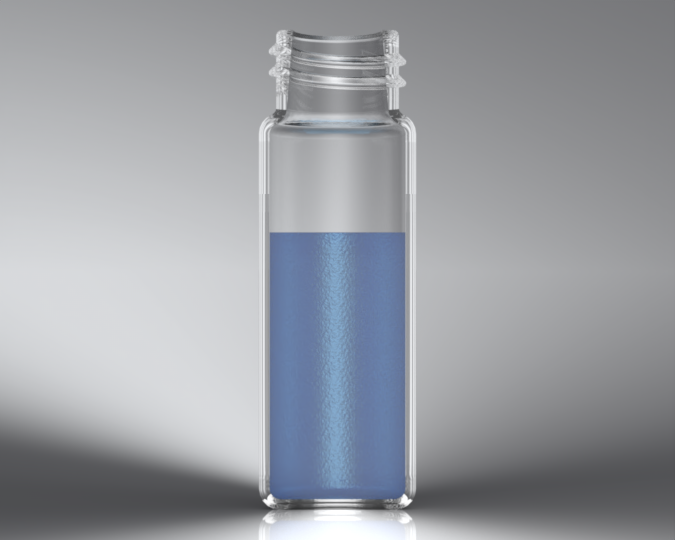
Maximum Recovery Vials (MRV)
The Maximum Recovery Vial (MRV) is available in slightly different forms from different vendors, with key variations in design, as can be observed in the experiment outline below. To highlight design differences, an identical volume of blue liquid was pipetted into each MRV, followed by an attempt to draw the same volume using a blunt-tip needle. The Pursuit Scientific Maximum Recovery vial proved to be the most effective, drawing the maximum volume leaving the least residual liquid in the vial. Another difference from a design aspect is the incorporation of a flat, robust base, which enhances durability, reduces the risk of cracking, and ensures maximum stability.
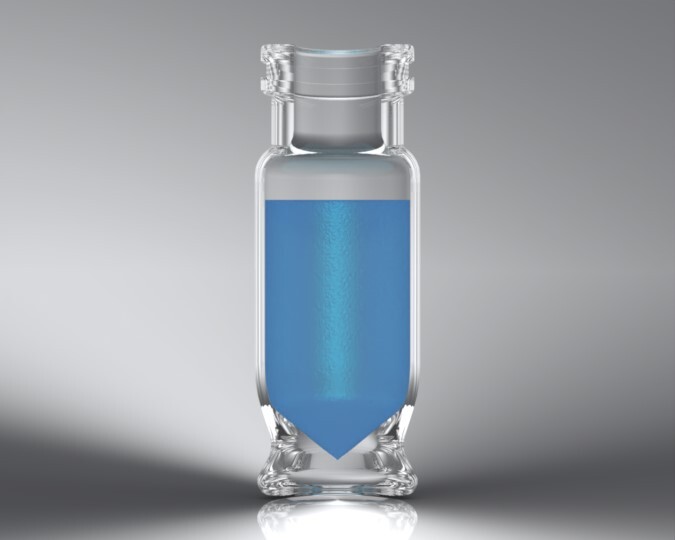
Total Recovery Vials (TRV)
The Pursuit Scientific Total Recovery Vial (TRV) is designed to offer the lowest practical residual volumes while maximizing capacity. Its shape provides a stable base, suitable for use in any autosampler or as a standalone vial on a bench surface. While other TRV vials are available on the market, some with a deeper design at the needle end to further reduce residual volumes, these can sometimes lead to bubble formation during filling, which could introduce inconsistencies and affect data reproducibility.
The TRV offered here strikes the optimal balance for routine, error-free work. It ensures low residual volumes while maximizing fill capacity. To enhance injection consistency across various volumes, the vial features a shorter needle depth, which helps eliminate problematic bubbles. This design provides better consistency for analysts using multiple autosamplers, all while maintaining very low residual volumes. In short, the TRV offers the ideal compromise between low residual volumes and robust, flexible use.
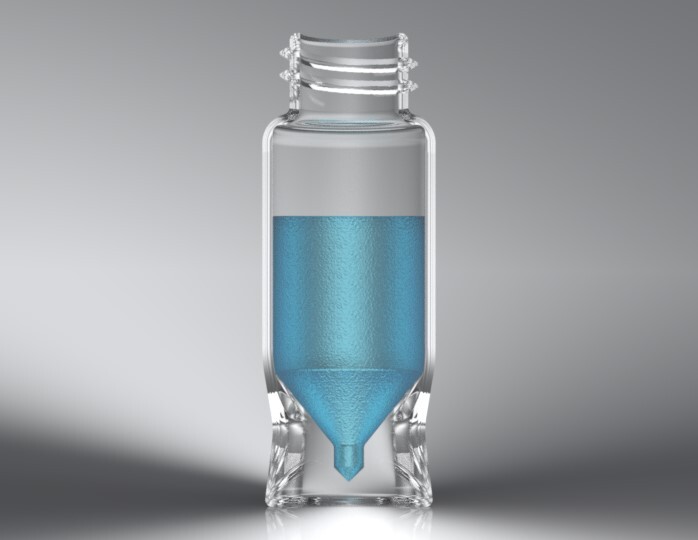
96 Well Plates with Inserts
There are traditional 96 well plates with Inserts and a 96 well Split-Plate with Inserts. These Split plate Inserts allow direct access to the glass inserts for faster heating and cooling capabilites such as water baths where these are not accessable in the normal 96 well Formats.
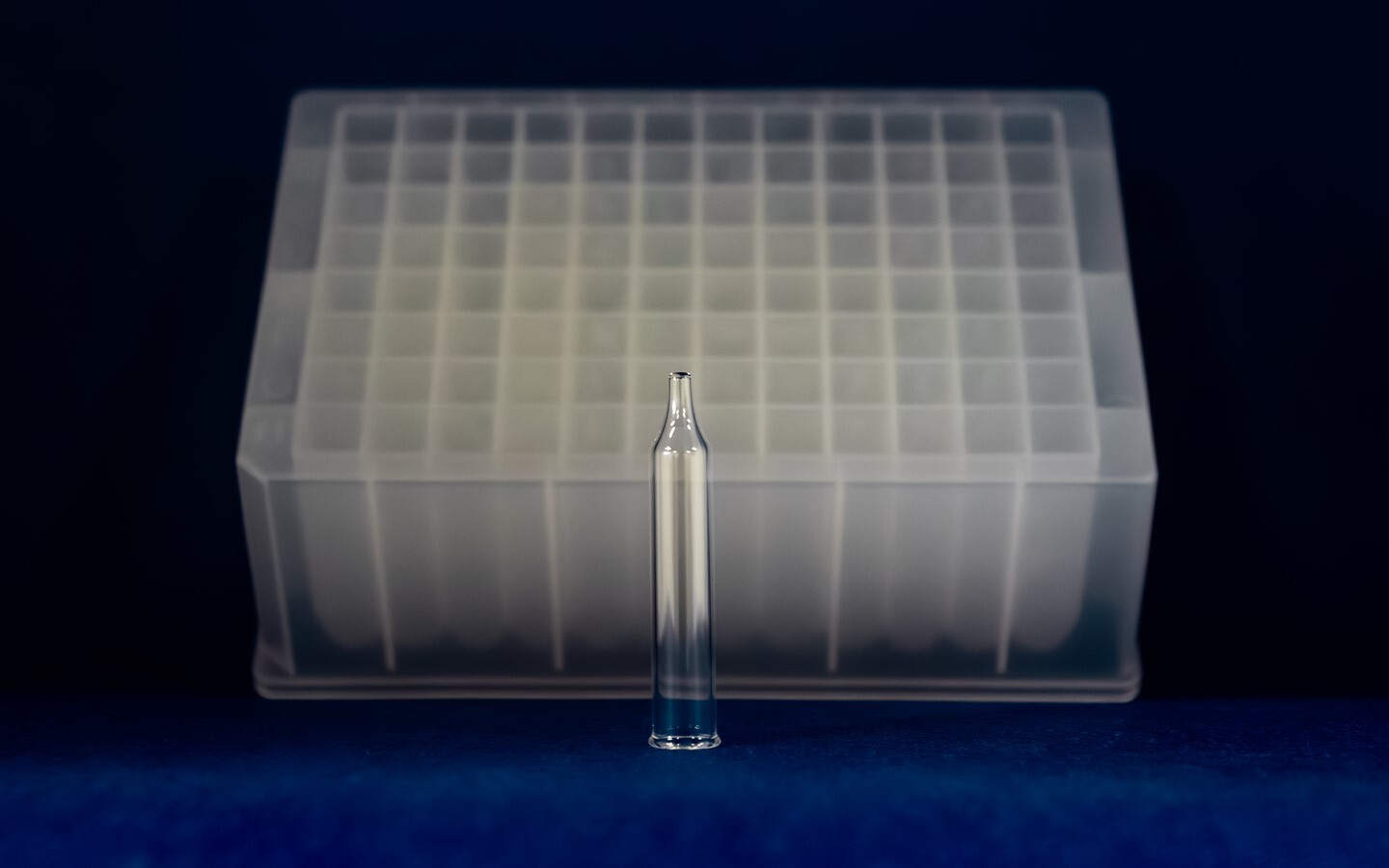
Traditional 96 well Plate with Inserts
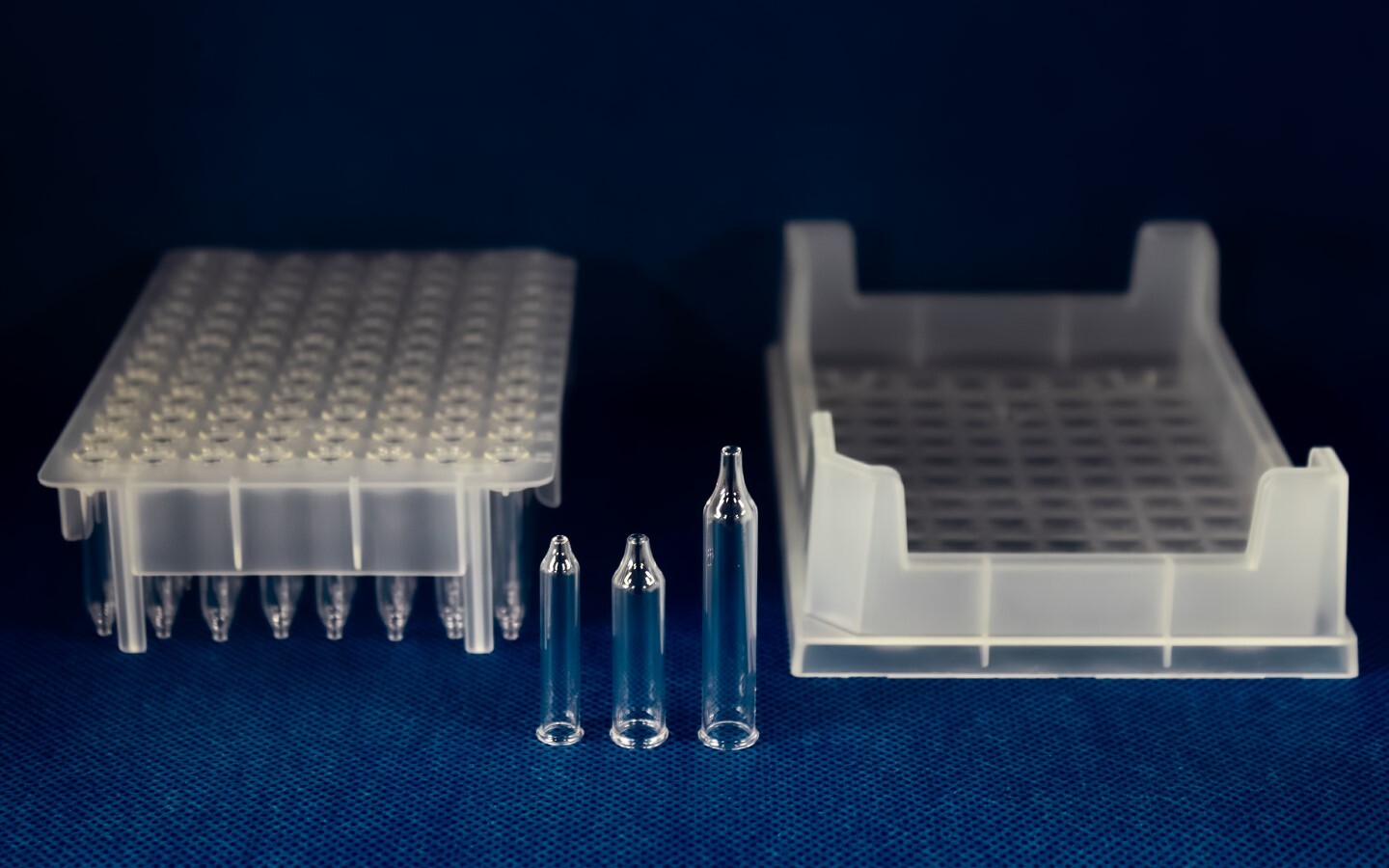
96 Well Split-plate with 3 different volume capacity Inserts
